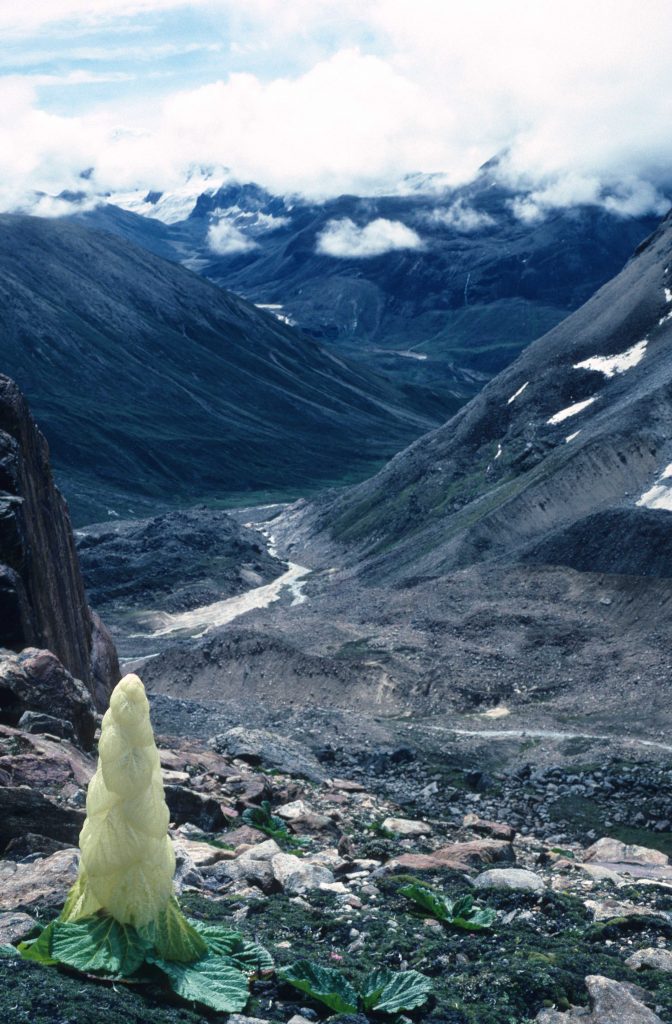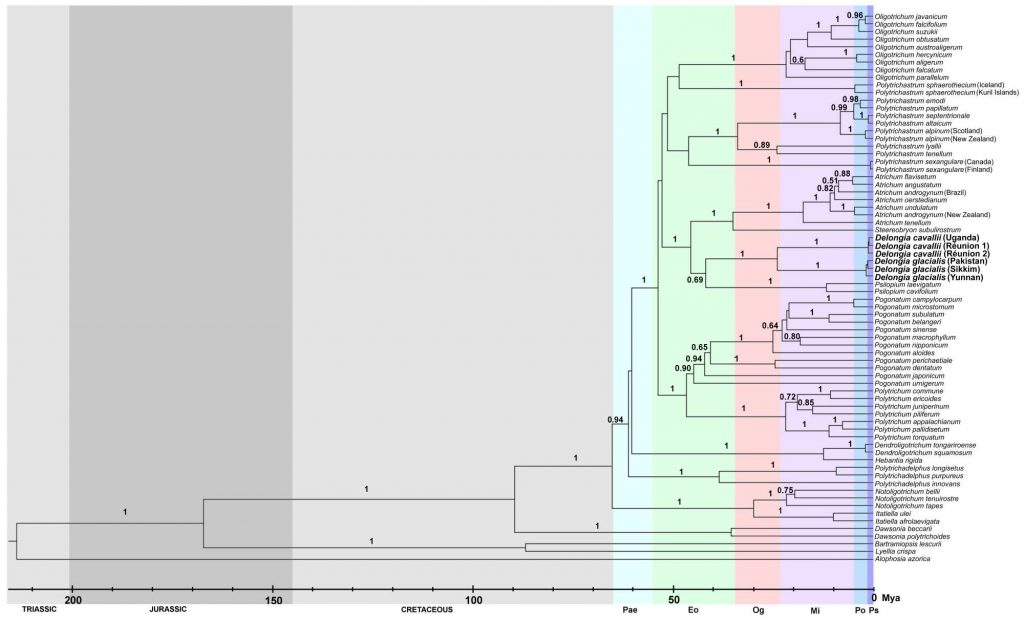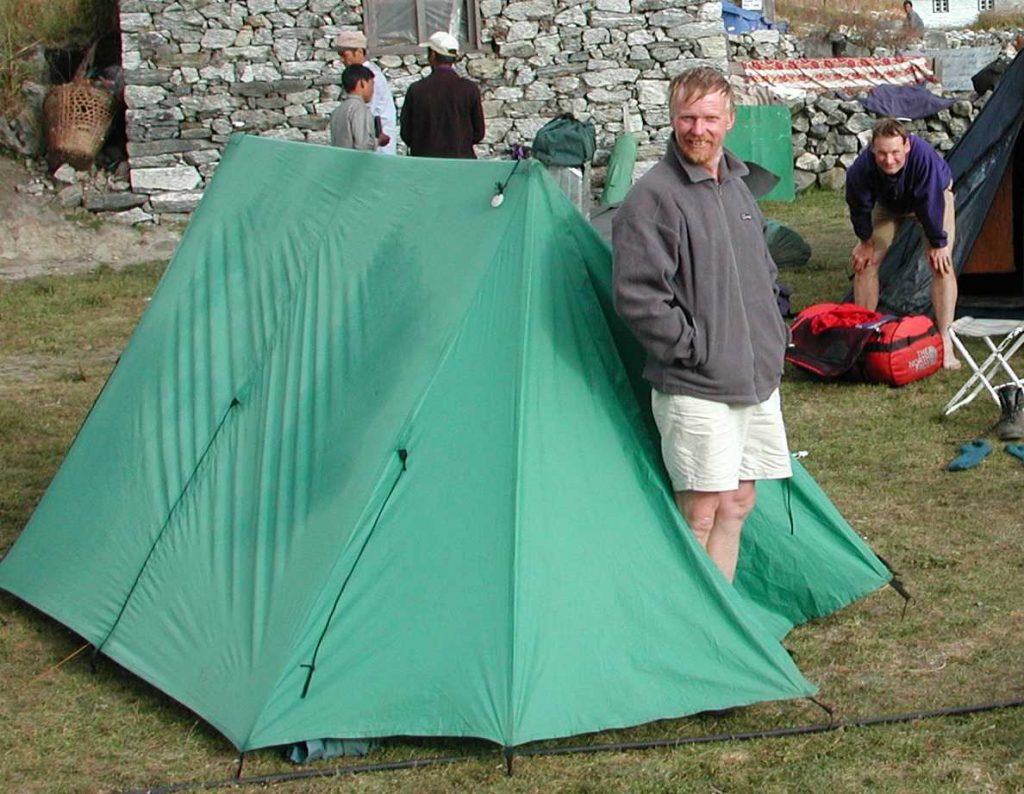
Distributions of Delongia cavallii (circles), which occurs in the East African Rift Mountains and on Réunion, and D. glacialis (squares) which spans the Himalaya from Pakistan to Yunnan
The relative structural simplicity of some groups of mosses can disguise their uniqueness, especially when simplified features have evolved multiple times within the same family from ancestors with more complex morphologies. The family Polytrichaceae is particularly well-known for very robust mosses such as the familiar Polytrichum commune, in which the leaves have sheathing bases and densely packed longitudinal “walls” of cells (lamellae) on their upper surfaces to increase the area available for the uptake of carbon dioxide and so the rate of photosynthesis in the exposed habitats they tend to grow in. This “pseudomesophyll” gives them an opaque appearance superficially similar to the leaves of vascular plants (despite the very different structure), and unlike the translucent, single-cell-layered leaves of most mosses. However, within the family a number of lineages have reverted to a smaller, more typically moss-like growth form with simpler leaves and much reduced lamellae, and it can often be difficult to know whether these share a common ancestor with such features or have developed them independently.

Piton des Neiges on Réunion, where Delongia cavallii (then Oligotrichum cavallii) was found in 2011, considerably extending its range beyond mainland East Africa (photo by Terry Hedderson)

Slopes above Yume Samdong in North-east Sikkim, a locality for Delongia glacialis. The large plant in the foreground is Rheum nobile, the Sikkim rhubarb (photo by David Long)
We have known for a few years that the smaller, morphologically simplified Polytrichaceae found in southern temperate parts of the world are not at all closely related to the similar looking species in Asian, north temperate and arctic regions placed in the genera Oligotrichum and Psilopilum. But even within Asia and the tropics it appears that there were two or three independent origins of this type of plant. In a paper just published in the journal TAXON we describe a new genus, Delongia, in honour of the recently officially retired (but still very active!) RBGE bryologist David Long, which includes two species previously placed in Oligotrichum. The name is particularly appropriate as most of the known collections of one of the species, Delongia glacialis, were made by David during his expeditions to Nepal, Sikkim and Yunnan and were first identified as Oligotrichum glaciale by Isuru Kariyawasam, an MSc student at RBGE. Interestingly, the second species, Delongia cavallii, has a quite different distribution, occurring in the East African Rift mountains and recently discovered by Terry Hedderson on the Island of Réunion.
Although molecular data were instrumental in recognising the distinctness of the new genus and its relatively distant relationship to Oligotrichum, it is also united by a number of unique anatomical features, not least spore capsules with a peculiar “spongy” lower part in which the stomata are often hidden when the capsule is dry and exposed when wet. In fact, this spongy texture had been noticed seventy years ago in O. cavallii and the rather euphonic generic name “Spoggodera” (“sponge neck” in Greek!) proposed, although this was never validly published.

A spore capsule of Delongia glacialis showing the “spongy” neck. Although the stomata are fairly exposed in this picture they become sunken in distinct pits when the capsule is dry
We were able to use a type of “molecular clock” dating technique to estimate when the lineages of the two fairly different species of Delongia became separated from each other, as well as when Delongia separated from its most closely related extant genus (either Psilopilum or Atrichum s.l., not Oligotrichum). It seems that the most likely date for the separation of the Himalayan D. glacialis from the East African D. cavallii was about 23 million years ago, right at the boundary between the Oligocene and Miocene epochs and just at the time that the East African rift system was beginning to form (the Himalaya were also continuing to rise rapidly at this time).
The lineage of Delongia itself probably originated way back in the Eocene (56–34 million years ago), highlighting the importance of recognising and naming such unique and relatively evolutionarily isolated components of biological diversity that might otherwise be mistaken for recently evolved species with many close relatives. So although Delongia only has two species it certainly deserves its generic status. The value of taxonomy is that while experts might not need names to recognise the evolutionary diversity in their own specialist groups, it is only by representing this diversity in a universal nomenclature that it becomes generally accessible and quantifiable.

A chronogram (a tree with branch lengths representing absolute time) showing the likely origin of Delongia in the Eocene and the separation of the lineages of the two species around the Oligocene Miocene boundary
Bell, N.E., Kariyawasam, I., Hedderson, T.A. & Hyvönen, J. 2015. Delongia gen. nov., a new genus of Polytrichaceae (Bryophyta) with two disjunct species in East Africa and the Himalaya. Taxon 64: 893-910.

